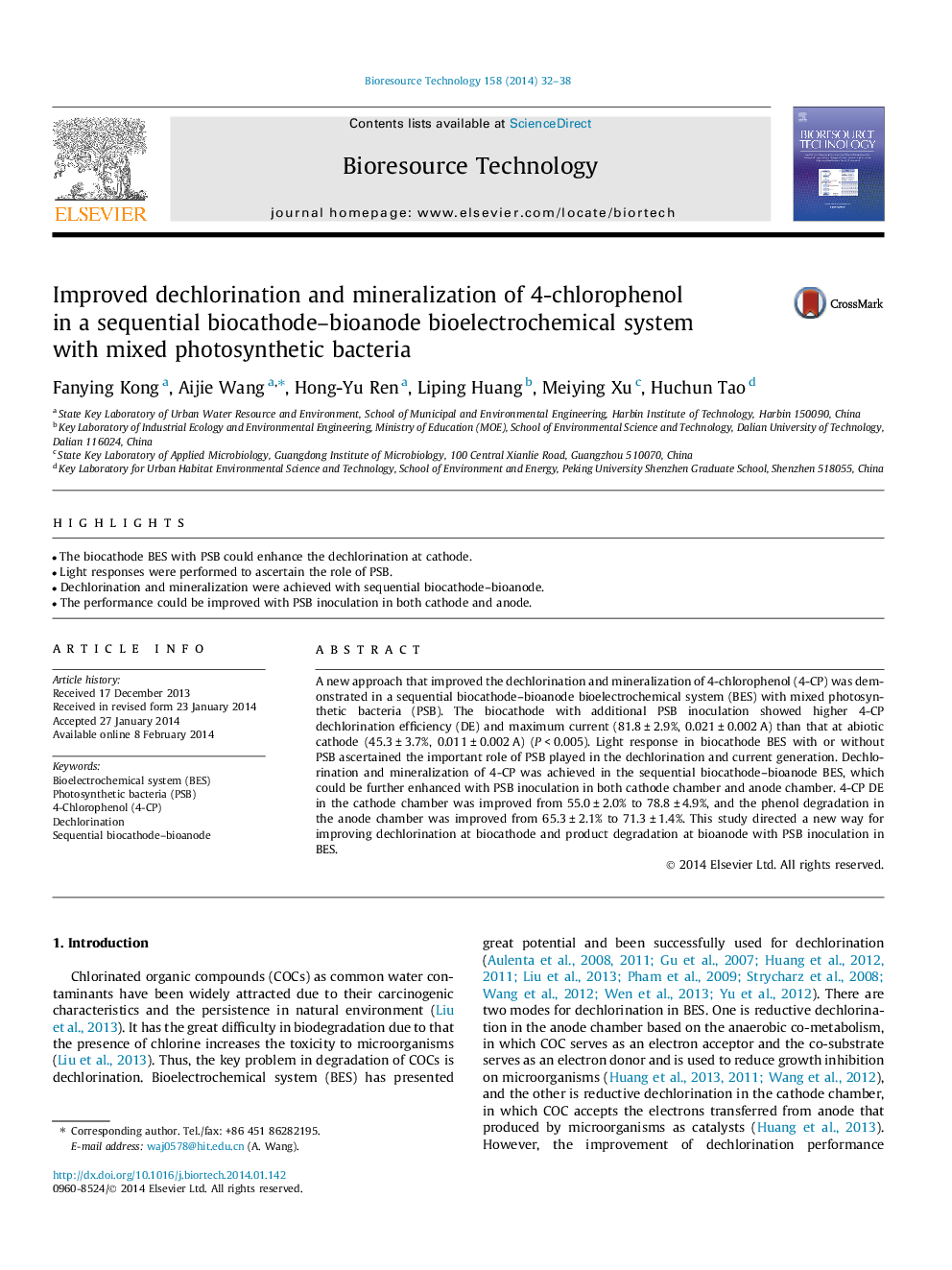| Article ID | Journal | Published Year | Pages | File Type |
|---|---|---|---|---|
| 680786 | Bioresource Technology | 2014 | 7 Pages |
•The biocathode BES with PSB could enhance the dechlorination at cathode.•Light responses were performed to ascertain the role of PSB.•Dechlorination and mineralization were achieved with sequential biocathode–bioanode.•The performance could be improved with PSB inoculation in both cathode and anode.
A new approach that improved the dechlorination and mineralization of 4-chlorophenol (4-CP) was demonstrated in a sequential biocathode–bioanode bioelectrochemical system (BES) with mixed photosynthetic bacteria (PSB). The biocathode with additional PSB inoculation showed higher 4-CP dechlorination efficiency (DE) and maximum current (81.8 ± 2.9%, 0.021 ± 0.002 A) than that at abiotic cathode (45.3 ± 3.7%, 0.011 ± 0.002 A) (P < 0.005). Light response in biocathode BES with or without PSB ascertained the important role of PSB played in the dechlorination and current generation. Dechlorination and mineralization of 4-CP was achieved in the sequential biocathode–bioanode BES, which could be further enhanced with PSB inoculation in both cathode chamber and anode chamber. 4-CP DE in the cathode chamber was improved from 55.0 ± 2.0% to 78.8 ± 4.9%, and the phenol degradation in the anode chamber was improved from 65.3 ± 2.1% to 71.3 ± 1.4%. This study directed a new way for improving dechlorination at biocathode and product degradation at bioanode with PSB inoculation in BES.
